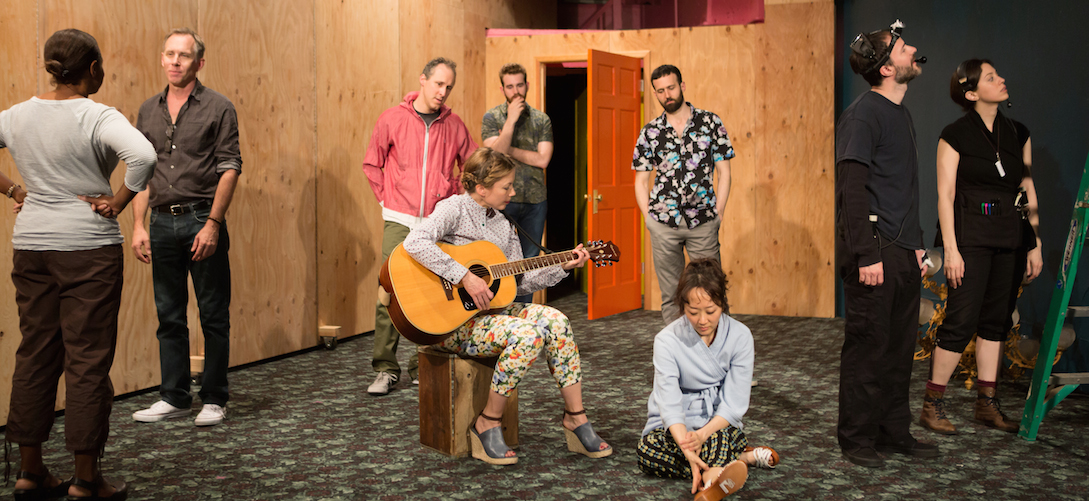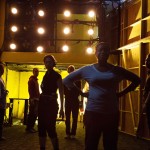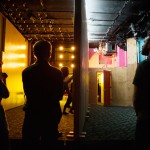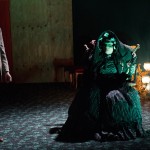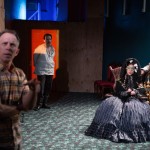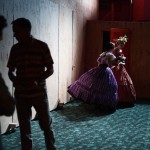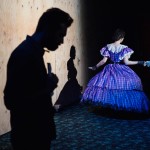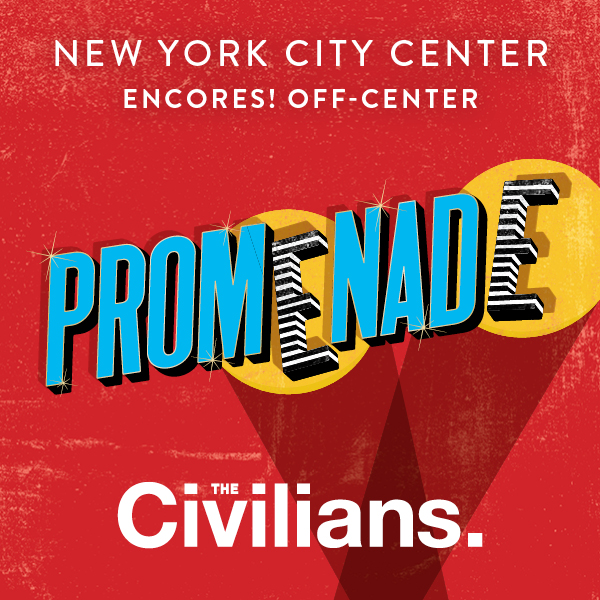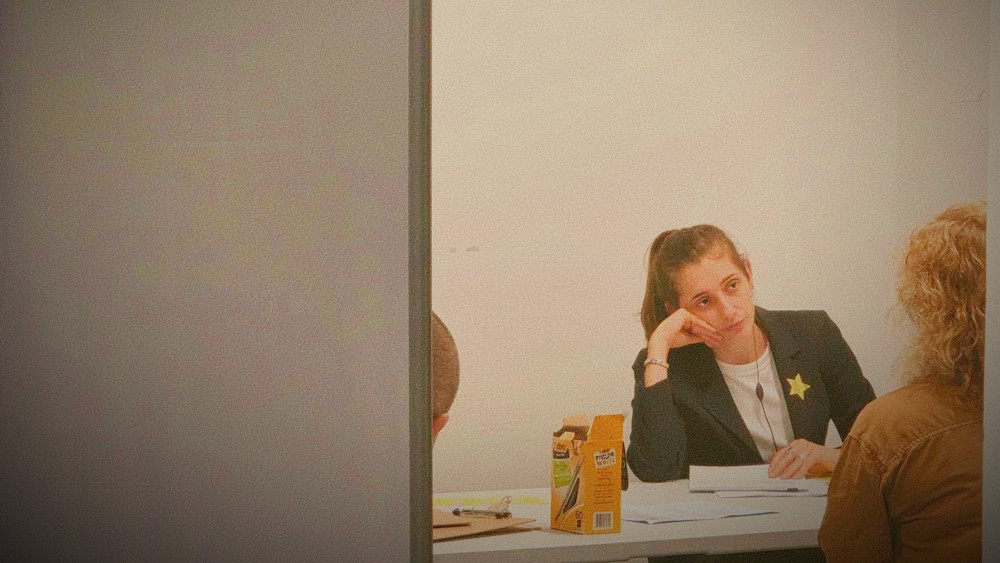Playwright Anne Washburn, who wrote the 2013 hit “Mr. Burns” at Playwrights Horizons (commissioned and developed by the Civilians) and director Les Waters, artistic director of Actors Theater of Louisville, took on a daunting task in theater: tech week. Their play, “10 out of 12,” documents the long, tedious hours in the darkness associated with the process. It opened May 26, 2013, at NYC’s Soho Rep.
If you’re unfamiliar with the term, “10 out of 12” refers to a contractual requirement for an all-day actor or crew call. Typically, on one of the days of tech, actors can be held working for 10 hours out of a maximum 12. During the 12 hour day, actors receive either two one-hour breaks or one two-hour break for food, leaving them available for 10 hours of work.
Extended Play Editorial Associate James Carter sat down with Washburn and Waters on the final day of their actual tech and learned about the process of making a play about tech during tech week.
Washburn and Waters met 10 years ago through mutual colleagues and subsequently worked together on “Apparition” in 2005 and “The Small” in 2010. They rejoined forces for “10 out of 12,” and they joked that working together every five years is good amount of time between projects. Waters called the spacing “vaguely sane.”
Washburn shared her affinity for rooting her work in real-life dialogue, whether recorded or observed. Waters discussed his time with Joint Stock Theatre Company, in which actors and writers used research to inspire workshops — sometimes referred to as the Joint Stock Method — growing plays by Caryl Churchill and David Hare out of the process.
JAMES: How has your process for “10 out of 12” been different than your other plays? I know “Mr. Burns” started with a set of recordings of storytelling.
ANNE: The difference is that with “Burns,” I started with a very discrete chunk of them telling a story, and that was what I began with, and then I moved forward from that. And with this, I have been taking notes in tech since 2005, and I narrowed it down to four techs just to keep sane. Then I had this material which spanned, you know, it was a big amorphous mass. And then in pulling that together with — I don’t remember how the story ended up being part of it — but throughout, there’s material interpolated. It’s just a more miasmic use of found material than anything I’ve used before.
JAMES: It sounds like it’s going to be what the kids these days are calling “immersive theater.”
ANNE: No, actually. It would be attractive to make an actual three-day tech immersive theater play. And there are moments when it is very experiential, but it’s also highly curated. I think the whole thing of immersive theater is you go into an area and you are kind of given leeway to experience it. And there are moments in this that, hopefully, will have that, that you can hopefully look about. But generally, your attention is very driven and focused, and you get this weird timelessness in tech, where you don’t really know how long you’ve been doing it or why. (Les laughs.) But those are pretty deliberate. So, no, it isn’t quite immersive theater, although it certainly is — it’s meant to be multisensory.
JAMES: And is the action all around you, or is it still very focused?
LES: It’s focused. I mean, it’s like sitting in Soho Rep watching a tech.
ANNE: You’re sitting amongst the designers, and the whole thing about a tech is that the designers are all trapped at tables. You know, there’s no movement in the house, because there can’t be — especially in Soho Rep — because every inch is packed with a table. So in a way, the degree to which an audience member is trapped in a seat is very much the way the designers are trapped at their stations.
JAMES: Les, how has your work with Joint Stock informed this type of work?
LES: I don’t think at all.
JAMES: Really? Why so?
LES: Well, I mean, it’s Anne’s play. It wasn’t workshopped like a Joint Stock piece. When I was with Joint Stock, most of those people in the workshop would go on to perform it, unless it was a very loose kind of workshop. I know the world of tech, although this is very different. I don’t tech like this, so it’s very different. And I fed Anne some lines when I was watching other people’s techs at Actors Theater, where I work now. I would send her occasionally some juicy, random, insane remark that you just suddenly picked up at, like, 10 o’clock at night on day five — somebody would say something particularly loopy.
JAMES: Anne, did you record anything for this — like interviews or anything like that — or was it all covert notes?
ANNE: No. No, at the beginning of these techs I would say — apart from the first one where I just started doing it for fun — I would say, “Look, I’ll be taking notes during the tech. I’ll supply you with a transcript at the end of it. If you find yourself in it and you don’t want to be, let me know and I will take you out of it.” Only one person over all the techs I did ever did that, and I took that person out. People don’t care. I mean, mostly people don’t remember. I’ve had to tell people, “This is you.” The actor Garrett Neergaard, who’s in it, was in the “Apparition” tech, and Gibson has a line of his, which of course Garrett doesn’t remember saying. There are moments in the play which become quite heated, and none of those are from an actual tech. No moment in which a person actually exposes themselves I, a) didn’t particularly see, and, b) if I did, didn’t put it in. So there is that separation.
ANNE: (to Les) I actually have a question for you.
LES: Yes?
ANNE: Do you want ever again to work in the Joint Stock way?
LES: Do I? Yeah. I would. I mean, I, I would be very interested in doing it.
ANNE: I think we could do something in five years.
JAMES: Les, you hesitated there, and then you said, “Okay, I would do it.”
LES: That’s because it’s so exhausting, and it’s a huge time commitment. I think when I did them for Joint Stock, they were kind of weirdly battering to do. I mean, they kind of got mostly bruised. But I do love it, and I love the sense of ownership that the original company would have over the material. So Caryl Churchill’s “Fen” — there’s no real person in it, but I think if we were to gather the original cast, they could identify where, like, 80 percent of the material came from. And then it was filtered through Caryl’s extraordinary imagination, which was something else, and you could watch the original company with a particular performance pleasure. Like, “We know what this is from, or what this is about, that may not be apparent in the material for this particular kind of aliveness on stage.”
JAMES: How long in that process did you typically work? Just until the work is done?
LES: It was a three-to-four week workshop, a 10-week writing period, six weeks of rehearsals, then six weeks on the road before it went into London — and it was worked on the road, like, every day — then six weeks in London, then it went on tour for another six weeks. And then when we did “A Mouthful of Birds” with Caryl and David Lan, I think that was three months with just workshops. It was a nightmare — I mean, a real nightmare — because you couldn’t get away from it. The structure didn’t appear for weeks and weeks and weeks, and it was a company of people who didn’t like each other. But that was away from the norm of how they would work.
ANNE: What always appeals to me in these discussions about Joint Stock is the degree to which everyone was a fully functioning mature adult with six million opinions, which probably made it much more hellacious, but also a much more dynamic situation in terms of ideas.
LES: Well, yeah. I mean, “Cloud 9” was an extraordinary group of people, and it was on sexual politics in the 70s, so nobody could really open their mouth about anything without being shot down. But they were an extraordinarily brilliant company of actors with a very, very brilliant director, Max (Stafford-Clark), and Caryl, so the whole notion of collaboration as being something where everybody gets on and just does it was like, “Well, everybody did it, but they didn’t necessarily get on.” And the reading process was extraordinary, because we would often just sit for days with stacks of reading material, which is great to sit in a room with other people and just read. And at the end of the day, somebody would — we would go round — and somebody would say, “Jeffrey Weeks studied the history of homosexuality in literature.” That would be talked about.
ANNE: Would you be all be reading the exact same thing?
LES: No. We would kind of draw up a reading list, and we would bring in experts to talk about stuff. But, no, we would be pulling from a lot of stuff, and if Caryl found something particularly exciting, she would say, “I think all of us need to read this.”
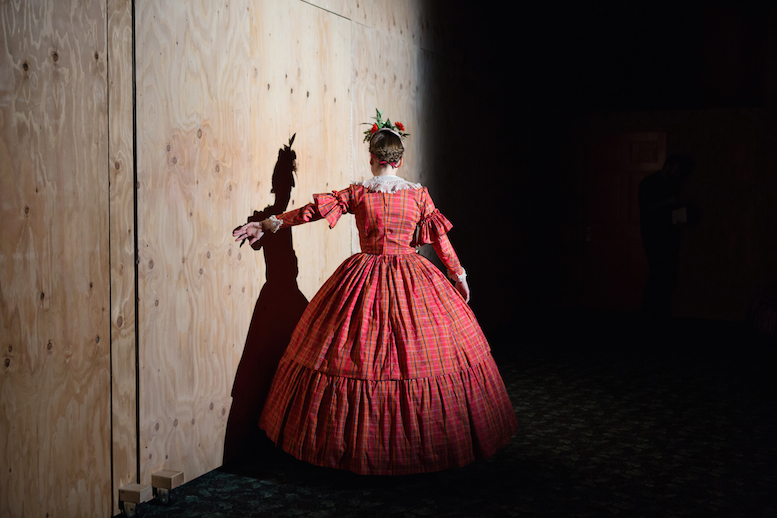
JAMES: When you had experts come in, was it like a round table situation or was it like a lecture?
LES: They would just come in. I’m saying “experts” — there would be like some pretty swanky people in the areas of gender and sexuality — but there, in “Cloud 9,” there’s the Jerry speech about the best way to get a blow job between Clapham Junction and Victoria — the guy who came in for that was the expert on which carriage to get into.
JAMES: Somebody’s gotta be an expert on it.
LES: Well, he was a real expert.
(Laughter.)
JAMES: If you didn’t use the Joint Stock Method for “10 out of 12,” how did the workshop process go before Les came on, or maybe after Les came on?
ANNE: When Les came on before the final draft — (to Les) I can’t remember when you came on.
LES: I don’t know. I mean, I knew when you were writing it I was very persistent. Like, “Can I do this one?”
ANNE: Which I said yes to.
LES: I’ve not been particularly party to the workshop.
ANNE: For all that it smacks of deep workshopping, it hasn’t so much been workshopped. I took an early version of it to the Clubbed Thumb writer lab — which directors will come sit in on — when it was just a bunch of stuff, before I had started to make any story. Emma Griffin was incredibly helpful. She said, “Do you know about this whole headset world?” And I didn’t. I had no idea, because no one, I mean, the director isn’t allowed on headsets. It’s totally verboten.
JAMES: So how did you get into the headset world?
ANNE: I think I first did it on “Burns.” And Justin (Townsend), who’s doing lights for this, was game. And I had an “in” because it was my play. Then I sat in on a couple of techs where I was friends of the designers, so people would let me get on headset and just listen. So that was a huge step. I started doing intermittent dipping in and out of techs. The problem with this play is that a tech is such an astonishingly rich source of everything. If one decided to properly workshop it, one could workshop it for five years.
LES: Yep.
ANNE: I was talking to Les about it the other day, the thing I would love to do would be to go into a tech, totally record all five days or four days or whatever it is, and then make a two hour piece from it of just very discretely realized structured chucks, which would be a different thing than what we’re doing. So there was that, just a couple of months ago, I got together with a bunch of the Bats, and we just sort of went through it. I needed to just work out what the timing of it was. It’s a script that’s hard to work out because there’s a lot of stuff that I have written in the script that happens simultaneously. Just to find out what the timing of it was and to see what I have written down, we kind of went through it over two days and did some loose stagings. And Bray came in for that — the sound designer — and that was incredibly helpful because we worked out a very important thing about the end, which was that we didn’t need to write an entire separate song, which we thought might need to happen. We could actually just go with this one song we were working on. So, that was just a two-day incredibly efficient thing with these really great, really good group of game actors. And then a reading at New Dramatists, which I directed because Les wasn’t there, and that, again, was just to get it on its feet, because you can’t make so much sense of it on the page.
JAMES: With this production, how have the actors been involved with the process? Has it just been in picking up things that you hear and then you cannibalize it and put it in the play, or have they been directly involved?
LES: Well, I’m cannibalizing images that come out of the actual tech. So, there’s a kind of particular beauty in tech, while, from my point of view, nothing is happening. It’s basically the sound and lights working like fiends, but I’m just sitting there. And when people relax on stage, you look at it from the outside — and it’s not lit so you can’t see people’s faces or whatever — or some particular sound will flare up. You think, “That’s incredibly beautiful.” So, there was a bit not yesterday but the day before, when three actors were sitting around talking, and I thought, “Oh, that’s much better than the scene we were looking at,” which actually did have three actors talking. It looked much better, so I’m just stealing stuff that will appear. The stage crew will do something, and I’ll say, “That’s great. Let’s put that in.”
JAMES: So business and looks and feelings and tones are getting brought into it, but nothing script-wise is changing?
ANNE: There is so much stuff, which is gorgeous and I’d love to steal, but the script is mostly at saturation point in terms of words.
LES: A great conversation yesterday about golf.
ANNE: Oh, god.
LES: That was particularly insane.
ANNE: It was really good. There’s no room for it. Throughout the rehearsal process, itself, was much like a tech, because we had the sound designers in with us, and there are a lot of calling lines — like the stage manager is calling things, or the lighting designers are calling things. So they would correct me, or we would discuss together opportunities for, you know, what would be the more exciting way of bringing these things out, and that’s still happening here. So this is a tiny, tiny example, but at the beginning of the tech, the stage manager has a discussion of, “All right everybody, welcome to tech. Welcome to tech. Actors, please sign in. You’re a half hour to this something, something, something,” which I’d had had the stage manager Amanda channel. I was like, “What do you say?” So, she did this. And come to the actual day, she said, “Everybody sign in. The sign up sheets are on the wall by the refrigerator in the kitchen.” So then I added that line. So I’m cannibalizing little bits here and there. Just the more specific language is, the more fun it is. That’s the fun of tech, for me at least, because I don’t know anything about design, and certainly the language around it is completely impenetrable for me, which I love. You’re just getting people who really know what they’re doing.
LES: What did Justin say the other day? “The lights were the unreliable narrator of the production.” And I was like, “My god! That’s fantastic.”
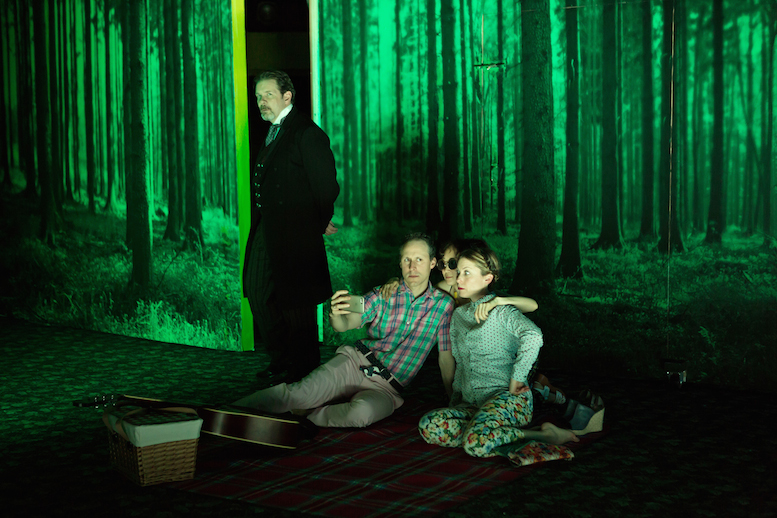
JAMES: Are you both seeing tech in a different way?
LES: Yeah.
JAMES: And what way is that?
LES: Well, I don’t listen on headset. I don’t know the — and I’ve chosen never to know — the specific language. It’s easier to be ignorant than say, “I don’t care about that, I need more side light.” There’s a whole particular world coming up that’s interesting that goes in a different rhythm to how I perceive it. Like, at the top of show when they’re getting ready, that’s a very tense-like languor. But for the ASM and the sound designer and the lighting designer and the crew, the rhythm is so different from me, because that’s very intense for them, and they’re always late, and they’ve always got an hour to do a half hour. So that’s really not my perception of tech.
JAMES: (to Anne) And you?
ANNE: It’s completely different. I mean, because the playwright is not useful in tech. And my initial understanding of tech and the reason I wanted to write it was just this weird, sensory, crazy experience, which is unlike any other one. But to write the play I actually had to learn more about how it functions. So, I have a much better — functional — and no one in tech, like, the lighting designer can’t know everything about sound and can’t know about directing. Nobody can be an expert in all parts. But I have a little bit of a better sense of just what’s going on and what animates, but I still have this very pervasive sense of, it’s just attractive and mysterious.
JAMES: Do you think going forward that either of you are going to approach tech differently?
LES: No. (Laughter.) No. I will just have been a part of the legend of “The Tech Play.”
JAMES: (to Les) I liked the question Anne asked you earlier about Joint Stock. Do you have any questions for her?
LES: Yeah. What would we do, so I can prepare myself, so I can start preparing for five years from now?
ANNE: Do you want to come up with the idea, or do you want me to come up with the idea?
LES: I would like you to come up with the idea.
ANNE: Okay, I will do that.
JAMES: And this is going to be a Joint Stock-style play?
ANNE: Yeah, I’ll let you know in a year what the topic is.
(Laughter.)
JAMES: That’s a good amount of time to come up with a topic.
LES: That’d be good.
ANNE: And then we have to start pulling together the actors. That’s the thing — the ensemble.
Authors
-

James Carter is a writer and experience designer. He was a founding member of terraNOVA Collective and its associate artistic director for eight years. Recent transmedia plays include "FEEDER: A Love Story" (terraNOVA/HERE, NYC) and "NY_Hearts" (One Muse Presents & The Brick Game Play Festival). James also works as a social impact strategy and research consultant for Lina Srivastava, LLC. He has written for the Creators Project, Culturadar.com, ArtsFwd and Theatre Communications Group.
View all posts -
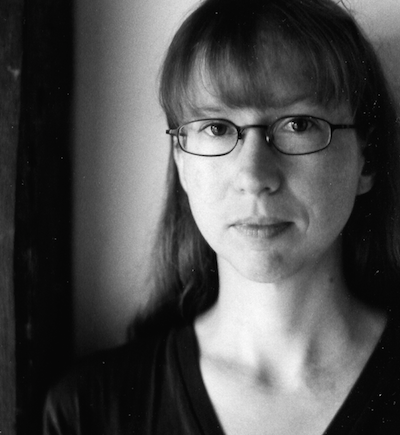
Anne Washburn's plays include "Mr. Burns," "The Internationalist," "A Devil At Noon," "Apparition," "The Communist Dracula Pageant," "I Have Loved Strangers," "The Ladies," "The Small" and a transadaptation of Euripides' "Orestes." Her work has been produced by 13P, Actors Theater of Louisville, the Almeida, American Repertory Theatre, Cherry Lane Theatre, Clubbed Thumb, the Civilians, Dixon Place, Ensemble Studio Theater, the Folger, the Gate, Playwrights Horizons, Red Eye, Soho Rep, Studio Theater, Two River Theater Company, Vineyard Theater and Woolly Mammoth. Awards include a Guggenheim, a NYFA Fellowship, a Time Warner Fellowship, a Susan Smith Blackburn finalist, and residencies at MacDowell and Yaddo. She is an associated artist with the Civilians, Clubbed Thumb, New Georges, Chochiqq, and is an alumna of New Dramatists and 13P. Currently commissioned by MTC, Playwrights Horizons, and Yale Rep. "10 out of 12" will be produced this spring by Soho Rep in NYC.
View all posts -
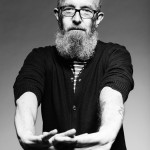
Obie Award-winner Les Waters is the Artistic Director at Actors Theatre of Louisville where he has directed Charles Mee’s "The Glory of the World," Lucas Hnath’s "The Christians," Thornton Wilder’s "Our Town," Will Eno’s "Gnit," Todd Almond’s "Girlfriend," Eugene O’Neill’s "Long Day's Journey into Night," Naomi Iizuka’s "At the Vanishing Point" and Charles Mee’s "Big Love" (2001 Obie). Waters' other credits include the world premieres of Anne Washburn’s "10 of out 12" at Soho Rep and "Dear Elizabeth" by Sarah Ruhl at Yale Repertory Theatre, as well as countless productions in New York at the Public Theater, Second Stage, Manhattan Theatre Club, Connelly Theater, Clubbed Thumb, BAM Next Wave Festival, and regionally at theaters such as the Mark Taper Forum, Steppenwolf Theatre Company, Goodman Theatre, Yale Repertory Theatre, American Conservatory Theater, La Jolla Playhouse and American Repertory Theater. From 2003 to 2011, he served as Associate Artistic Director at Berkeley Repertory Theatre, and in 2009, he made his Broadway debut with "In the Next Room, or the Vibrator Play." Les’s productions have ranked among the year’s best in the New Yorker, the New York Times, TimeOut New York, Time Magazine and USA Today. He led the MFA directing program at University of California at San Diego from 1995 to 2003.
View all posts


